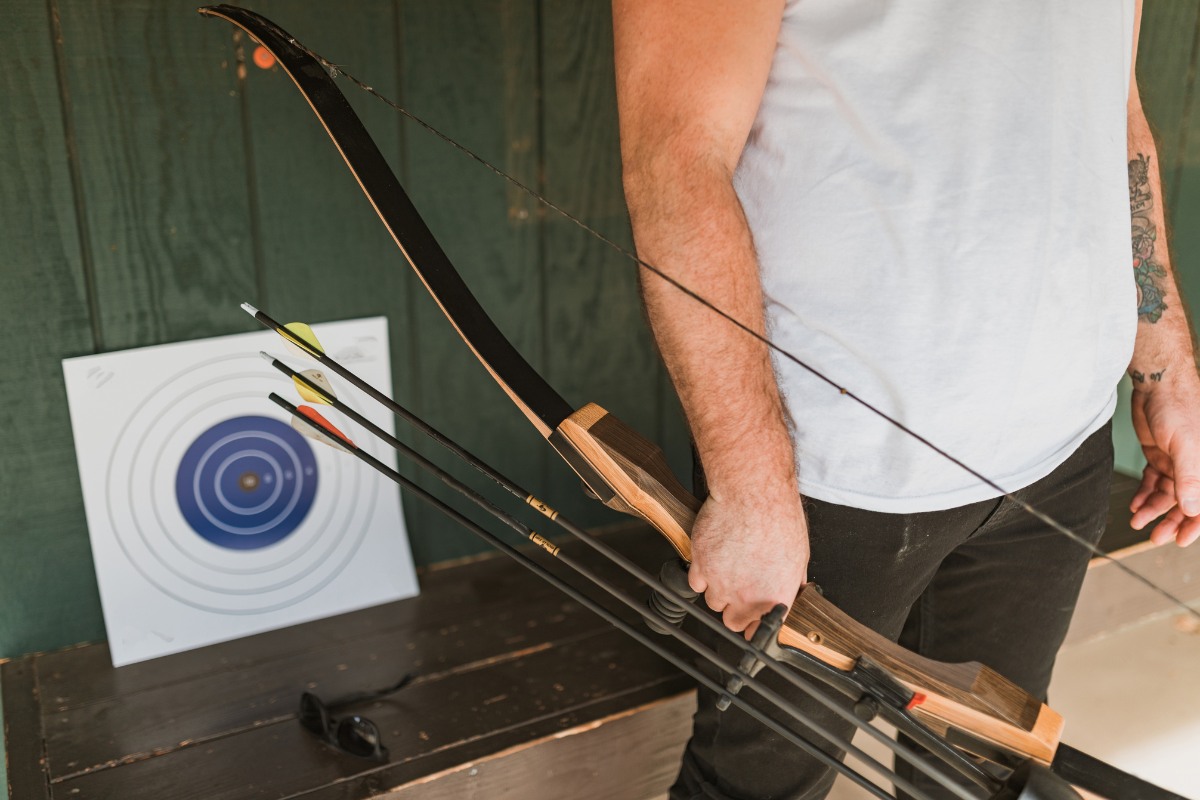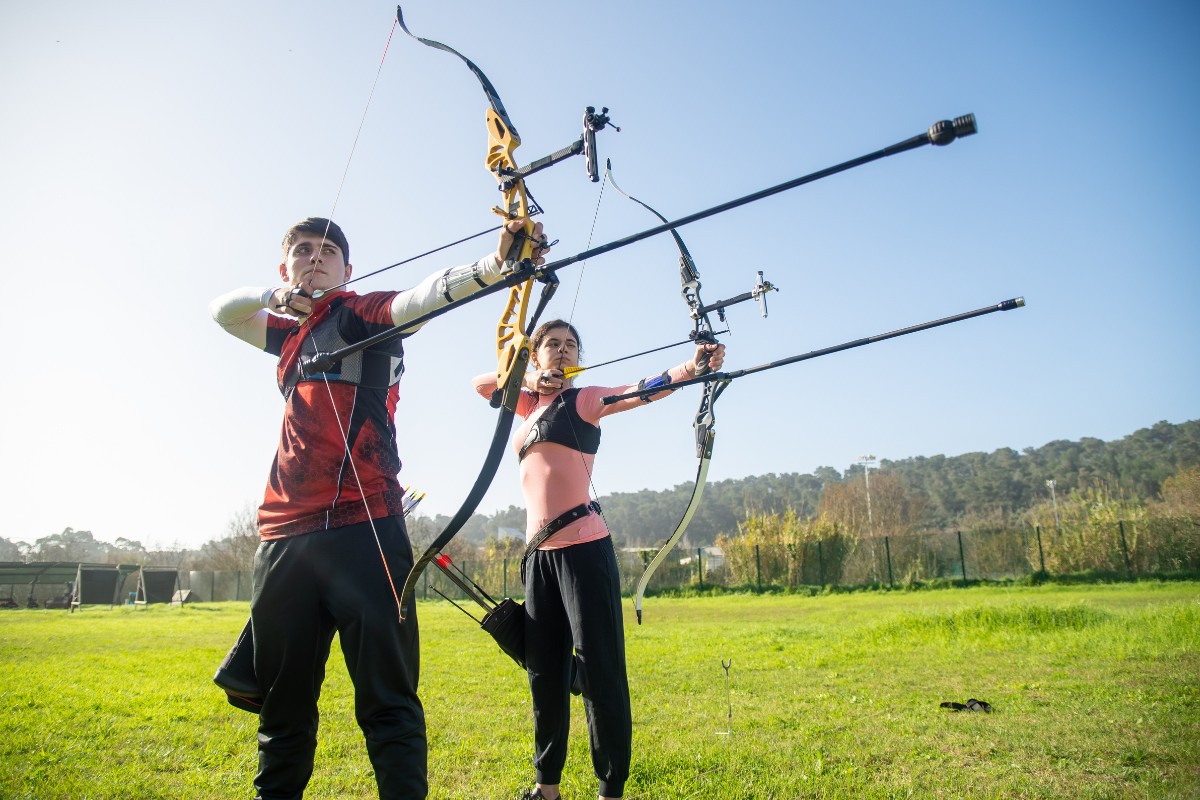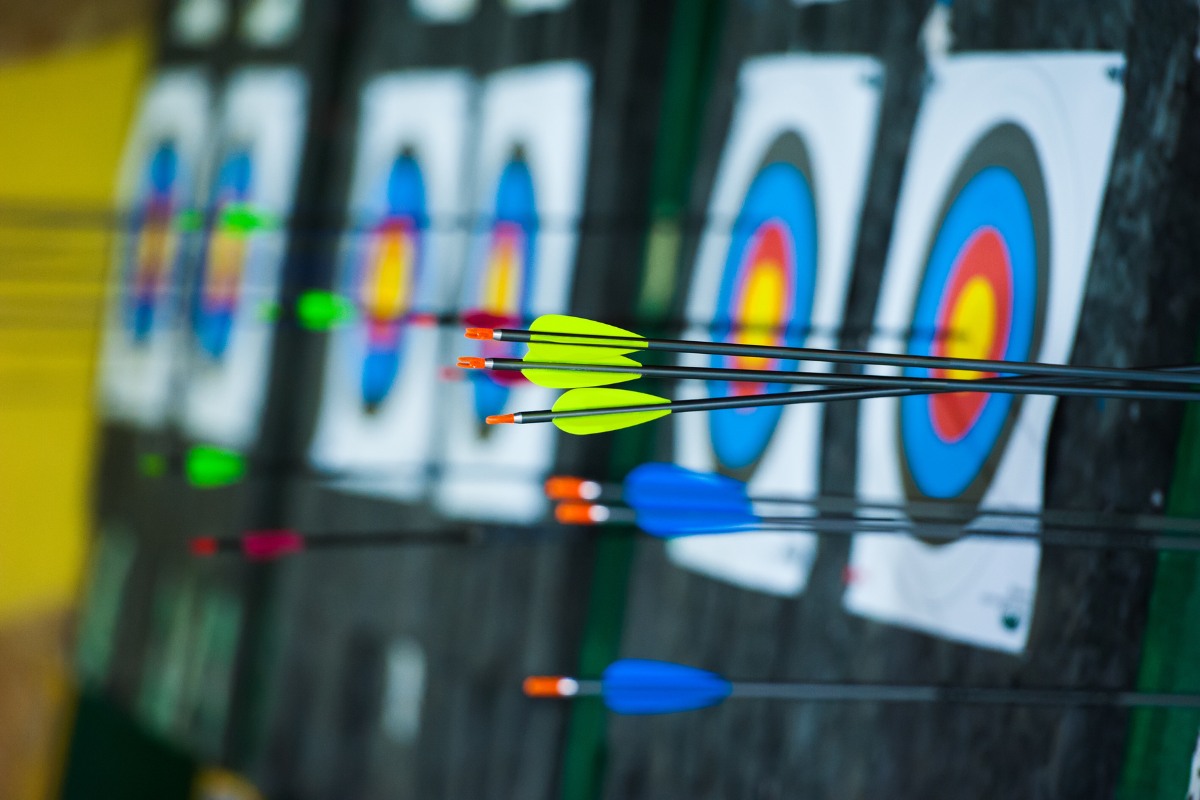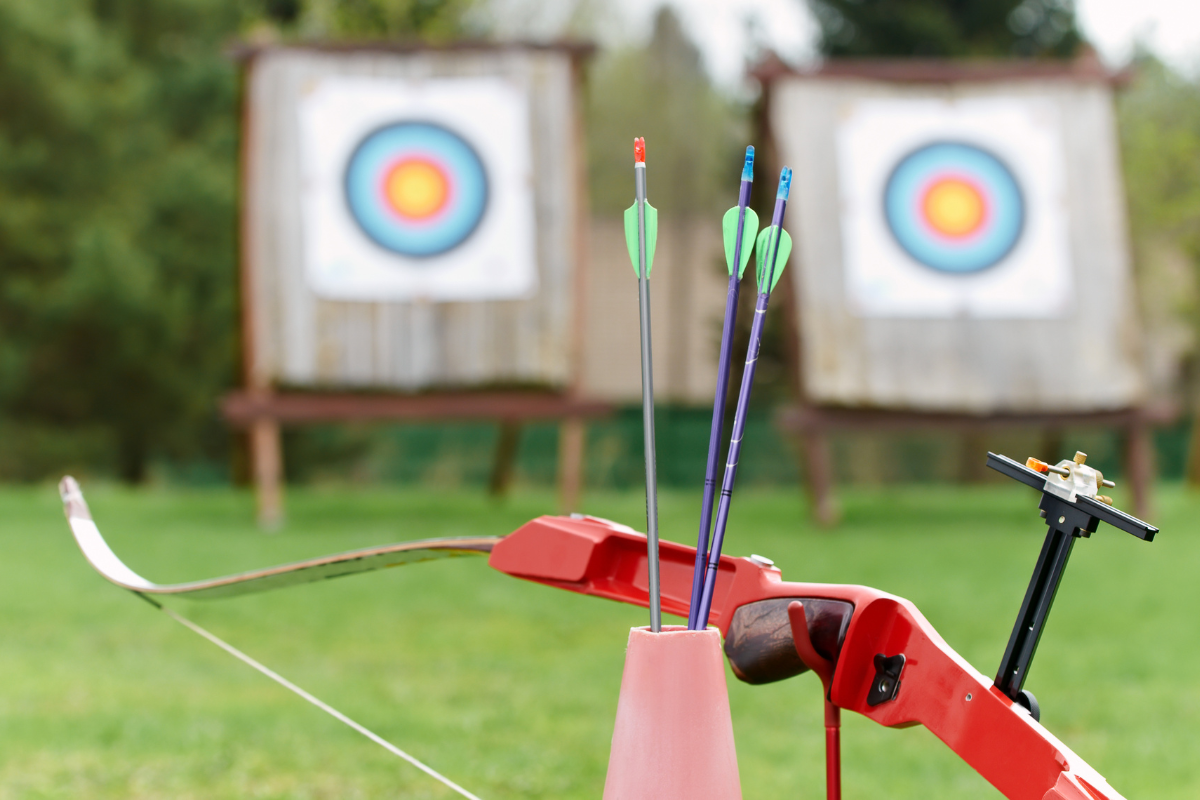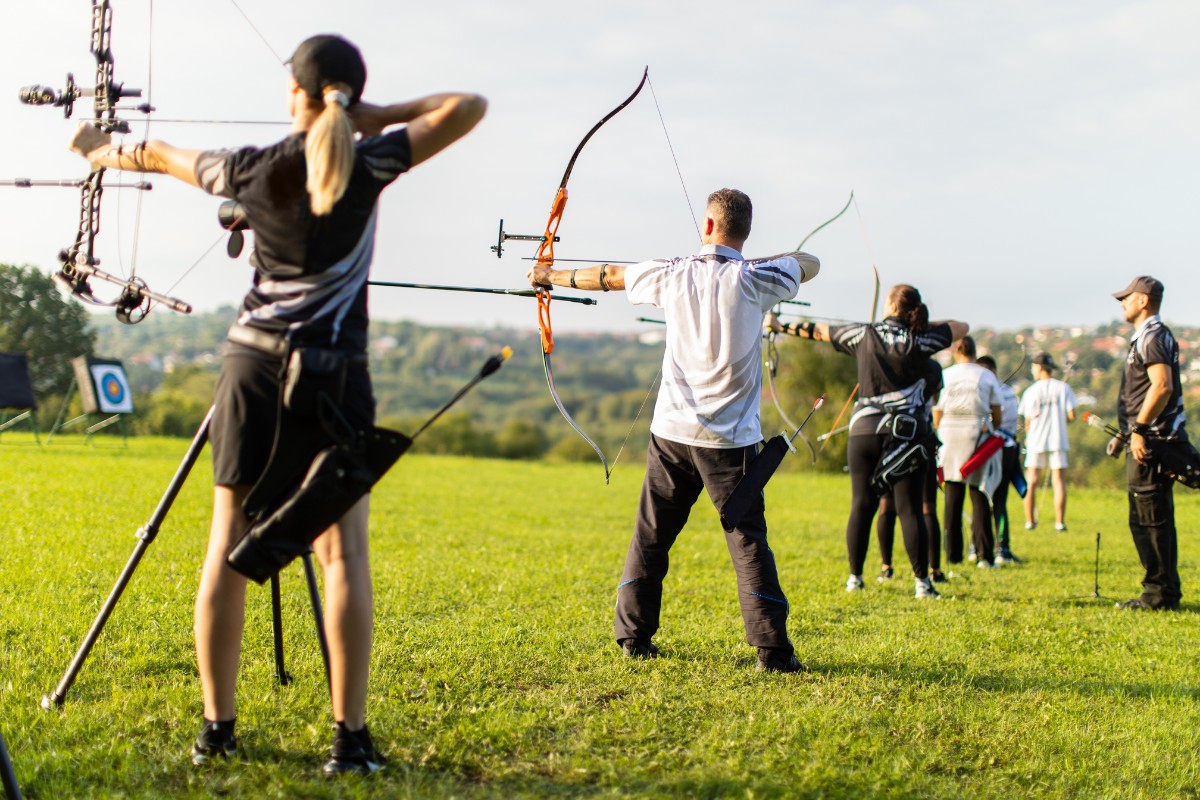The burning archery question that many folks have always wanted answered – what are recurve bows made of? Recurve bows are ubiquitous: we often see movie archers and famous athletes shooting them, and they sure look great. This is why many folks can’t help but wonder what the materials in these handsome bows are!
What Is a Recurve Bow Made Of
The recurve is available in both traditional and modern variants, and each of these takes different materials to build. The more traditional recurve bows are made out of wood that’s been curved by heat or force, as well as other materials such as horn or bone and (of course!) string. The making of modern recurve bows involves many other materials. The core of this bow’s curved limbs can be either wood or carbon foam (which is lighter and smoother). Over the core, the limbs have several layers of either fiberglass, wood, or carbon.
The separate middle part of the recurve bow (also known as the riser) is a world of its own. Here, makers tend to use wood, carbon, carbon fiber, or a metallic alloy of magnesium or aluminum that makes the structure more solid. There can also be a combination of these! Beginners’ bows can even feature risers made out of plastic.
Using synthetic materials instead of wood has two main advantages: recurve bows made of these materials can be produced at a more economical price, and their weight and performance are way more predictable!
What Is a Recurve Bow Used For
We all know it: recurve bows just look great. They’re the supermodels of the archery family. Elegant, curvy, and traditional-looking, recurve bows can make any amateur archer look like a consummate Robin Hood. If you agree, you might be looking into getting one of these beauties for yourself!
However, it’s not all talk and no action here: recurve bows have been around for millennia (and we still find them gorgeous!) because they work, because they are useful! But what do you use your pretty recurve bow for?
Recurve bows pack a punch: their design, with limbs that curve away from the archer at the last moment, gives them a heavier draw weight than other, straighter bows. They are also easier and lighter to carry than, say, longbows. These exceptional qualities made them an ideal weapon for military forces before the age of gunfire. Egyptian archers were known for using this sort of bow in their territorial expansion wars. Other famous historical archery units, Mongol and Scythian horse bowmen, used this type of weapon for its potency and ease of transportation.
But is it all just military conquest? Of course not! You don’t need to be a millennia-old soldier to wield one of these recurve bows. These were used throughout Europe and Asia as hunting props. They are still used for hunting today (though most experts would recommend a composite bow).
Even more: the recurve bow can boast that it is the only accepted Olympic bow type! This makes it the most common and sought-after type for sporting competition. If you’re looking to go into archery as a sport, the recurve might just be the best bow for you.
Can I Break a Recurve Bow
Every bow is beautiful and beloved by its owner. Every bow was, as well, particularly costly to the owner’s wallet for them not to value it! The recurve, though, adds its unique beauty to this price-and-use mishmash of love.
And, when you love something, you most likely want to protect it from harm. This goes for animals, places, people, and (obvs) your recurve bow. So, besides the self-evident (such as “don’t set your bow on fire, kids”), what do you need to know to keep your recurve safe?
Most bows are vulnerable to breaking if you don’t treat them correctly. And a breaking bow can have disastrous consequences: not just to the weapon itself, but also to your well-being. Need to know: a traditional recurve is typically made wholly out of wood and is more prone to damage than a modern one made of fiberglass or carbon.
It’s important for every archer to know what are the most common causes for a recurve bow to break in order to carefully (religiously) avoid it. The most common “to be avoided” breaking factor is dry firing. This means firing the bow (releasing its string) without notching an arrow in. Moral of the story: never draw your bow without an arrow in it, and always make sure you feel the “click” of the arrow as it gets notched. Dry firing can delaminate or fracture the limbs, and even cause splinters to fly into your arms and face.
Also, don’t leave your bow strung for long periods of time, as it will wear both the string and the limb tips. As a further precaution, make sure you get your bow from a reputable maker. Ask for a guarantee!
What Is the Difference Between a Recurve and Compound Bow
Recurve bows and compound bows are some of the most beloved by archers everywhere. If you’re wondering which to pick, you need to know that, even as they are both wonderful and rewarding choices, they have a couple of crucial differences:
- Recurves look simpler, more streamlined, and traditional. Compounds have lots of pulleys and mechanisms that give them a more “techno,” futuristic look.
- Recurves are lighter and not as hard to carry as compounds.
- A recurve will force you to refine your technique and strength more than a compound, which is more reliant on the bow’s own mechanism.
- Compound bows are more complicated in their upkeep than their recurve counterparts, as there are more parts that need to be taken care of.
- Compounds are easier to draw: they require less upper body strength than recurves. This means your arrow will fly faster and further with less effort.
- Compounds tend to be more accurate and customizable than recurves.
Ultimately, it all comes down to your preferences, physical abilities, and the time you have to practice!
Final Thoughts
As you’ve probably noticed, recurve bows and their making are fascinating. After reading these details, we hope you find them intriguing too. They truly are a whole marvelous world, and there’s always more interesting aspects to plunge into and to explore!
